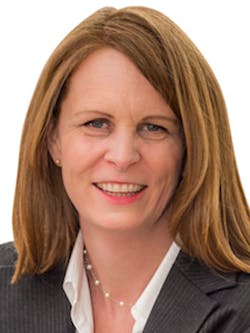Value based care should include caring for our nurses
We know when clinicians are chronically stressed it can threaten patient safety. So why does the stress nurses face regarding staff shortages and burnout continue to persist in so many healthcare settings – especially in today’s value-based reimbursement environment, with outcomes so closely tied to payments and penalties?
Healthcare Purchasing News asked veteran nurse and international speaker Catie Harris, PhD, MBA, RN, founder of NursePreneur, a mentoring business platform for nurses, to share her thoughts on the issue.
“Value Based Reimbursement (VBR) is linked to outcomes used to incentivize hospitals and providers [and] since nursing salaries are fixed, the reimbursement structure of hospitals and providers has little effect on nursing,” Harris said. “VBR outcomes are typically broken into measurable variables. Invariably nurses are charged with the task of tracking and documenting these variables which translates into increased time spent on computer documentation, increasing the number of daily meetings, and punitive action for negative results. VBR has increased the workload of nurses without the benefit of profit-sharing. In fact, nurses only receive negative feedback, such as receiving a notice that the unit had a certain number of pressure sores, hospital acquired infections, etc. per month.”
Also, Harris says VBR “does not address real issues of burnout” noting a lack of focus on nursing staff retention, offering nurses little control and input over how patient care is delivered and how it would affect changes in the healthcare system, as well as no career ascension models for nurses and mentorship to guide them into leadership roles that suit their leadership style and qualities.
“Nursing is an inherently stressful job but that doesn't mean burnout is inevitable,” Harris said. “Working in a unit where the nurses are cared about, their voices heard, their careers are nurtured and overall they are appreciated and supported will create a culture that will reduce burnout and improve job satisfaction.”
What about patient safety? Another problem that can create immense stress for many nurses is working in an environment that doesn’t encourage transparency and reporting of events when something goes wrong. Harris views patient safety as an organizational issue that starts with top management.
“The cultural milieu is determined by the values of leadership. For instance, if a nurse reports unsafe practice or practice issues, will the nurse be taken seriously by management or will the nurse be ignored, or worse labelled as problematic?” considered Harris. “The way management reacts to challenges and issues will dictate whether practice change can occur. As a nurse, if you see a co-worker report unsafe practice that affects patient safety, then that nurse gets labelled as problematic by management and no change occurs, the message that becomes very clear – in that culture top management doesn't value nursing input and there are associated negative consequences to addressing safety concerns.
“Frequently, these units have high turnover rates from stress and burnout as nurses quickly learn that minimal change in that type of environment will occur and their licenses could be potentially at risk,” continued Harris. “Top management is responsible for having open communication with the nurses, talking about the safety concern, addressing what is being done about them when nurses bring up incidences of concern and reward the nurses for caring enough to bring up patient safety issues.”
About the Author

Valerie J. Dimond
Managing Editor
Valerie J. Dimond was previously Managing Editor of Healthcare Purchasing News.

